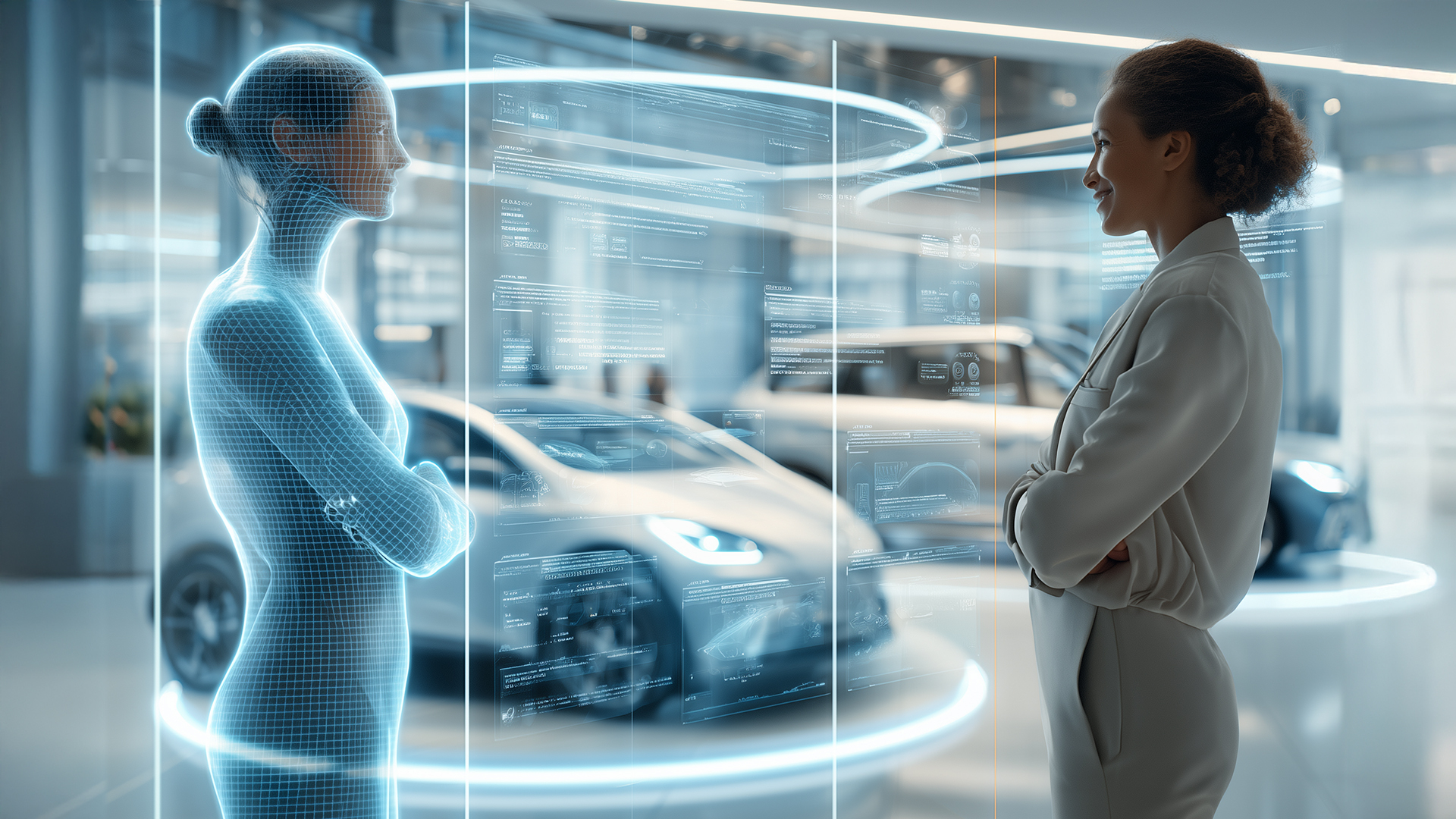The auto industry is in high gear, shifting towards a digital future. From dealerships to manufacturers (OEMs), everyone’s feeling the change. To understand what’s driving this, we’re joined by Gerry McEntee, Head of Sales – GCC, at Seez. He brings over a decade’s worth of expertise to the table – both in sales and operations. Gerry will share his insights on how digitization is impacting the industry, offering a clear view from the driver’s seat.
Part 1 : Reshaping the Automotive Landscape
Q.1) Let’s begin by diving into the big picture. Gerry, How has digitization fundamentally reshaped the automotive industry, particularly in the realms of sales and operations?
Today’s customers are incredibly well-informed thanks to the vast amount of information available online. They can research everything from vehicle specifications to dealership reputation before even stepping foot on a lot. This has definitely made the competition tougher and given consumers a lot more power. Plus, with digital tools like virtual showrooms and augmented reality, customers can enjoy things like virtual test drives and custom vehicle configurations right from the comfort of their homes. It’s really transformed the way people shop for cars.
Q.2) Expanding on that, how has digitization changed the way car buyers interact with dealerships and the overall sales process?
The rise of e-commerce has made it possible for customers to buy vehicles online, including sorting out financing and delivery. They can also customize their car entirely online, selecting everything from the color to unique body kits that might not be available in the showroom. This gives customers greater control over their choices and enhances their buying experience. Additionally, the research phase has moved online, so by the time customers visit dealerships, they’re already well-informed and focused on specific models. This shift means dealerships need to rethink their sales strategies, offering more value-added services and personalized experiences that go beyond just the basic product information.
Part 2 : Digital Tools in Action
Q.3) What specific digital tools have you found most impactful in your role? Can you elaborate on how these tools enhance your sales or operational processes?
From my perspective, chat platforms—both AI-powered and live chat—are incredibly valuable for enhancing customer interactions. Today’s consumers expect quick responses, and these tools are perfect for meeting that demand. AI chatbots, are becoming increasingly popular because they offer 24/7 support, unlike traditional live chat services which often have limited hours. Plus, AI chatbots like Seezar can handle a variety of tasks, from setting up appointments to guiding customers through the sales process.
Additionally, CRM systems and digital marketing tools have been game-changers for dealerships. They help with lead management, customer targeting, and boosting conversion rates. On top of that, inventory management systems have become more advanced, helping dealerships optimize stock levels and improve overall efficiency. While these tools are powerful, successfully implementing them requires effective team training and adoption. This step is key to getting the most out of these technologies and improving sales as well as operational efficiency.
Q.4) Are there any digital tools you’ve considered implementing but ultimately rejected due to potential drawbacks?
Integration is absolutely crucial for the success of any automotive product. Even the best product will struggle if it doesn’t integrate seamlessly with existing systems, especially the core dealer management system. IT leaders prioritize avoiding data duplication and the headaches that come with managing multiple systems. Without proper bidirectional integration, a product quickly loses its value and ends up being a mere KPI-metric tool instead of a true business solution. From my conversations with customers, it’s clear that integration is always a top priority. If a product doesn’t work well with the major industry systems, it’s unlikely to gain any real traction, no matter how good it is.
Part 3 : The Human Touch in a Digital Age
Q.5) With the rise of digitization, Are we witnessing a decline in the importance of human interaction within the automotive industry?
While digitization has undoubtedly reshaped the automotive industry, I believe the role of human interaction has evolved rather than declined. Early in the car buying journey, where customers are doing a lot of online research, there’s less need for direct human involvement. But as they move further down the sales funnel, that human connection becomes more crucial. Retailers will start to use the power of AI to really enhance the customer’s experience and push them further down the funnel, but the final stages of the purchase decision often hinge on interpersonal relationships. People buy from people — ultimately, that human touch is still a key differentiator in closing deals.
Q.6) How can dealerships leverage technology to enhance the customer experience rather than replace salespeople entirely?
By offering digital tools for initial research and inquiries, dealerships can streamline the customer journey and focus sales efforts on building rapport and addressing specific needs. For example, AI-powered chatbots can offer 24/7 support and handle common questions, which lets salespeople concentrate on more valuable interactions. In the end, it’s all about blending technology with human expertise. Technology helps optimize processes, gather valuable data, and provide efficient support, while salespeople shine in building trust, understanding customer needs, and closing deals.
Q.7) AI can now personalize the car buying journey. Is this a win for customer experience, or an intrusion into privacy?
I believe AI-driven personalization can be a significant win for the customer experience. By customizing recommendations and offers based on individual preferences, the car buying journey becomes both more efficient and enjoyable. While we do collect data, it’s usually just basic contact information like names, emails, and phone numbers. There’s also a growing emphasis among businesses on safeguarding customer data, given the severe consequences of data breaches on brand reputation. Plus, the significant investment involved in buying a car naturally discourages predatory sales tactics.
Q.8) What challenges have you faced in implementing digital solutions, and how did you navigate them to achieve success?
One of the biggest challenges with rolling out digital solutions is managing organizational change. Overcoming resistance to new tools and processes requires effective communication, training, and demonstrating the benefits for both employees and customers. To address this, I focus on building consensus, setting clear expectations, and offering ongoing support. I encourage adoption by highlighting how the new solution can simplify workflows and improve customer experiences. It’s also important to foster a culture of continuous learning and adaptability to keep up with the fast-paced tech landscape—today’s cutting-edge products can quickly become tomorrow’s fish and chips newspaper.
Part 4 : Looking Ahead: The Road to the Future
Q.9) Can you share your vision for the future of digitization within the automotive industry? How do businesses need to plan to stay ahead of the curve and embrace future technological advancements?
I see a lot of potential in the electric vehicle (EV) sector, and it’s set to keep growing, especially with governments pushing more for sustainability. One major challenge we’ll face is developing the infrastructure, like widely accessible charging stations. Beyond just electrification, the automotive industry is also going through a digital transformation. Technologies like connected cars and autonomous driving are evolving quickly, and AI is playing a bigger role in areas such as vehicle performance and manufacturing. To stay ahead, automakers must prioritize research and development while also investing in talent acquisition and development. Ultimately, a customer-centric approach is crucial—technology should always aim to enhance the customer experience.
Gerry’s final ‘brake’ down:
Having spent over a decade in the automotive industry, I’ve noticed a big shift towards the digital age, especially in sales and operations. AI tools and virtual showrooms are changing how people buy cars, but I still think the human touch is key, especially when it comes to closing deals. Launching Seezar, the world’s first automotive-focused ChatGPT, has been a major highlight for Seez. The positive feedback we’re getting reminds me of the early days of Siri or Alexa – there’s so much potential! To win in this ever-evolving market, we need to embrace change and utilize digital tools to simplify operations. Ultimately, our focus should be on enhancing the customer experience by finding the perfect balance between technology and human connection.



